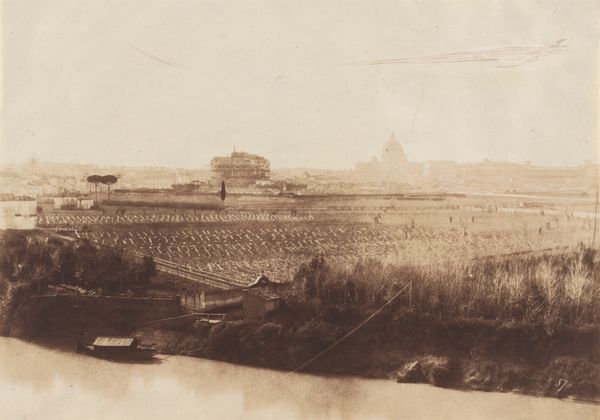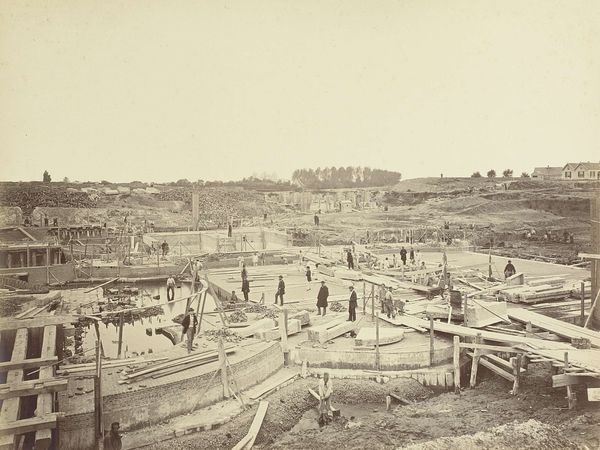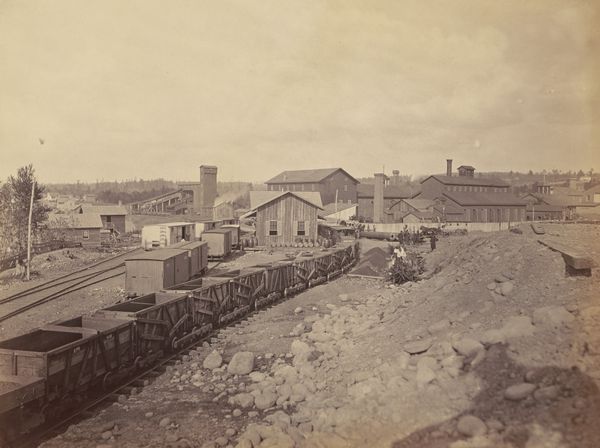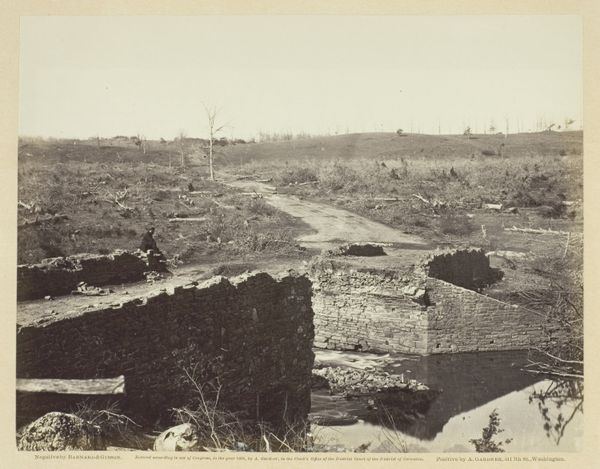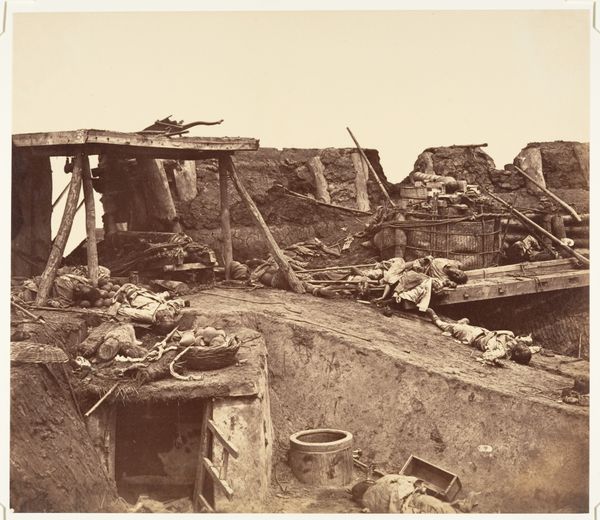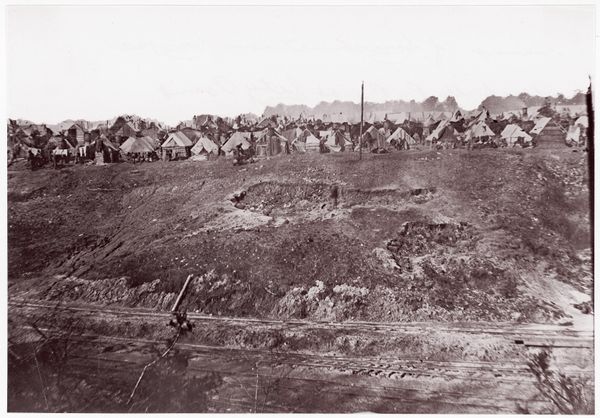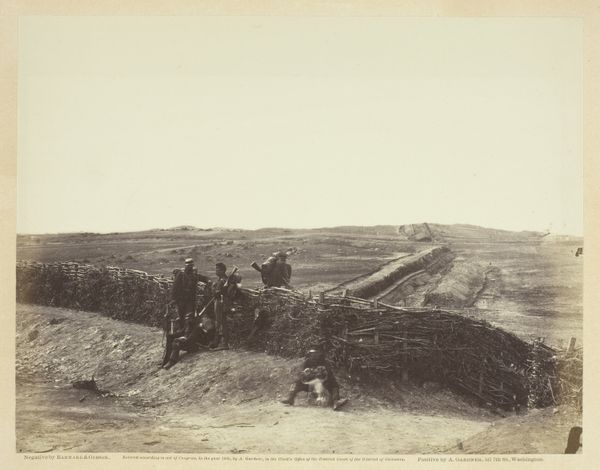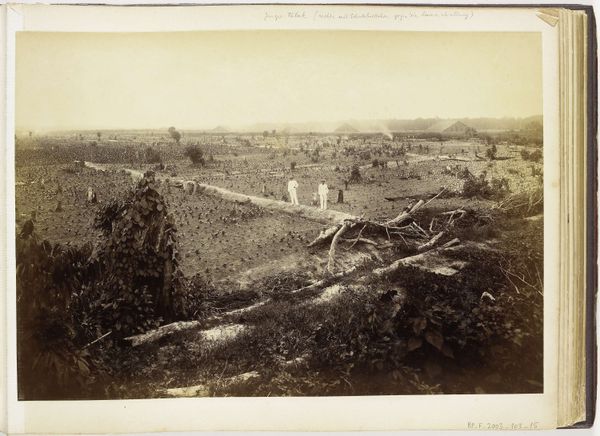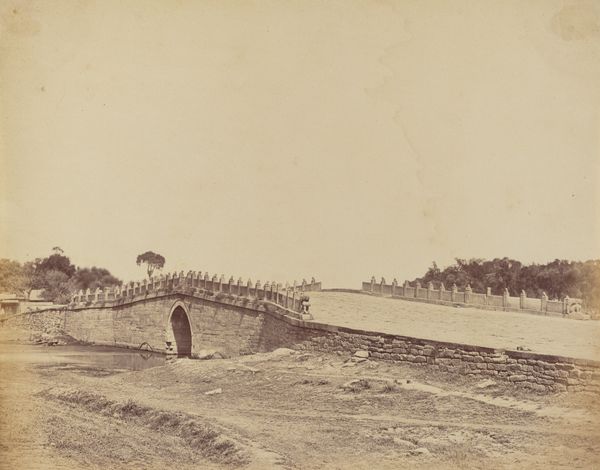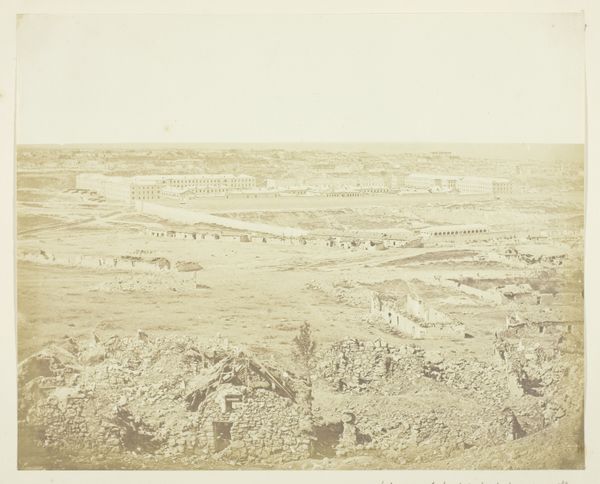
Exterior of North Fort Showing the English Entrance, August 21, 1860 1860
0:00
0:00
photography, albumen-print
#
landscape
#
photography
#
cityscape
#
history-painting
#
albumen-print
Dimensions: image: 23.8 × 29.1 cm (9 3/8 × 11 7/16 in.) mount: 24.8 × 30.3 cm (9 3/4 × 11 15/16 in.)
Copyright: National Gallery of Art: CC0 1.0
Editor: We’re looking at "Exterior of North Fort Showing the English Entrance, August 21, 1860," an albumen print by Felice Beato. The photograph has this haunting, almost desolate quality. The ruined fort is quite striking. What's your take on this, seeing it as an art historian? Curator: That desolate quality speaks volumes, doesn’t it? Beato wasn't just capturing a scene; he was documenting the aftermath of colonial violence. Consider the title itself: “the English Entrance.” This implies a forced entry, a violation. It’s crucial to view this image through the lens of the Second Opium War, understanding how the British Empire leveraged military power for economic gain. Editor: So it's not just a landscape, but a loaded one? Curator: Exactly. The crumbling architecture becomes a symbol of resistance and the devastating impact of imperial aggression on local structures, both physical and social. What do you make of the composition? The placement of the bridge, for instance. Editor: The bridge sort of leads your eye into the destruction. Almost like you are entering the scene, invited to witness it firsthand. Curator: Precisely! Beato is implicating the viewer, making us complicit in this act of observation. The photograph becomes a form of visual testimony, demanding that we confront the consequences of colonial expansionism. This forces us to recognize photography’s complex role, as both a tool for documentation and a potential instrument of power. How does this change your initial impression? Editor: It adds layers of complexity. It’s no longer just a desolate scene but a deliberate statement about power, destruction, and maybe even accountability. I guess art can be much more political than I initially thought. Curator: Indeed! Analyzing historical context brings us face-to-face with these narratives, which encourages us to unpack these artworks with consideration.
Comments
No comments
Be the first to comment and join the conversation on the ultimate creative platform.

